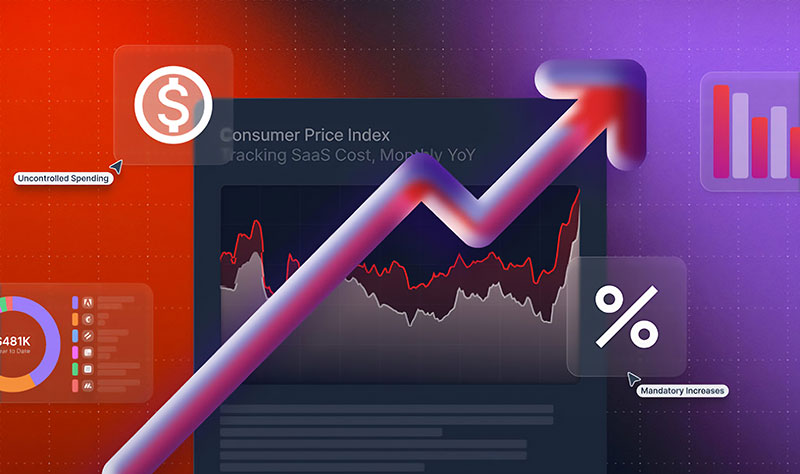How to reduce SaaS spend
Identify opportunities to right-size your SaaS stack
When it comes to reducing SaaS spend, there are often cost-savings to be had simply by optimising your SaaS stack.
According to research from Flexera, almost a third of all SaaS spend is underused or wasted, largely on duplicate tools, redundant applications and excess licenses. By rationalising your software portfolio, you can justify the use of each SaaS application and identify those that can be consolidated, replaced or outright retired.
This shouldn’t be a one-off exercise though. Instead, you should have constant oversight about the tools in use across your business — something that is only possible with real-time visibility.
More specifically, you should have oversight of:
- The applications that have been subscribed to at any given time
- How much each one is costing the business
- The number of licenses for each
- The cost of each license
- The application owner
- The application purpose
- Any auto renewal clauses and notice periods
- Any other contract terms
While it is possible to manually track this in a spreadsheet, as your company utilises more and more tools, it can become increasingly difficult to keep on top of and therefore increasingly difficult to ensure your SaaS stack is cost effective.
Stay ahead of SaaS renewals
Another way to reduce your SaaS expenditure is by keeping on top of your renewals.
By knowing which subscriptions are due for renewal and when, you can ensure that you’re not paying more than you need to — either in terms of excess licenses or for tools that are no longer required. The problem is, many organisations don’t keep track of their renewal dates and subsequently end up leaving it too late to manage, often resulting in them either losing buying power or becoming tied into an unwanted contract.
By keeping on top of these auto-renewals — or better still, having them removed from your contracts altogether — you can ensure that you are giving yourself enough time to right-size your SaaS stack and secure the best terms possible.
Get pricing benchmarks
Right-sizing your software technology stack isn’t the only way to drive down costs though.
The reality is that 90% of buyers are overpaying for their software by as much as 20-30%, which means that there are almost always opportunities to secure a better deal on your SaaS subscriptions. You just need time and leverage.
The question is, how do you gain this leverage?
In short, with insights into what other companies are paying for any given subscription and therefore an understanding of a vendor’s willingness to discount.
At Vertice, we can give you these insights. In fact, we have access to the pricing and discounting data for more than 13,000 vendors worldwide, ensuring that you’re getting the best possible price on any SaaS tool.
Better still, we can take the burden of buying, managing and renewing this SaaS off your hands, saving you a significant amount of both time and money.
See for yourself how much we could save you with our free cost savings analysis tool.





